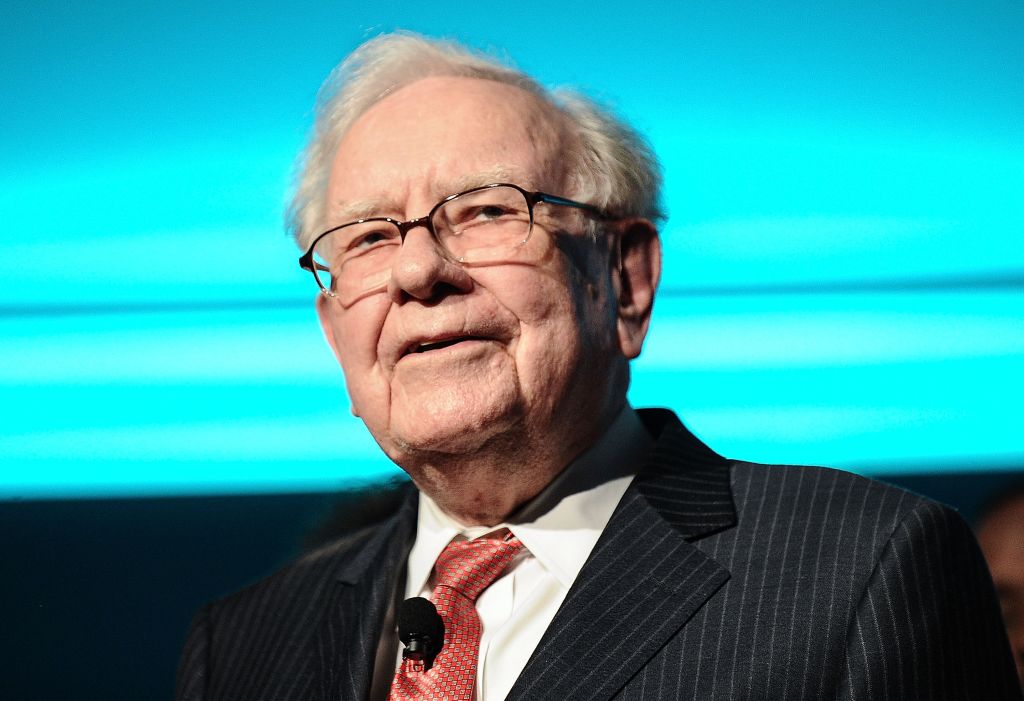Time to Buy Gold?
A perfect storm of market forces could push this precious metal, already at a 27-year high, toward $1,000 an ounce. But most investors should limit their exposure.

When you hear the term "gold bug," chances are you think of a survivalist doom-and-gloomer incessantly warning of financial disaster. Think again because recently the term might as well be a synonym for "pretty smart investor."
Gold has been in a long-term upswing, rising more than $500 an ounce since 2001. However, few investors seemed to notice. But it's hard to miss the tear gold has been on since August. The metal closed at $760.20 an ounce on October 16, up $3.10 from the previous day's close. That's up some 16% since its August low and not too far below an all-time high of $850, set in January 1980.
The surge in the precious metal has ignited a rally in mining stocks as well. Many of the stocks rose sharply as the overall market faltered in recent days, although most miners retreated some on October 16. Barrick Gold (symbol ABX) closed at $42.04, down 2%, for example, while the Dow fell just 0.5%, to 13,912.94.
From just $107.88 $24.99 for Kiplinger Personal Finance
Become a smarter, better informed investor. Subscribe from just $107.88 $24.99, plus get up to 4 Special Issues

Sign up for Kiplinger’s Free Newsletters
Profit and prosper with the best of expert advice on investing, taxes, retirement, personal finance and more - straight to your e-mail.
Profit and prosper with the best of expert advice - straight to your e-mail.
Is there much left of this gold rush? That depends on how much time you've got. The fourth quarter is traditionally a strong one for gold, owing to worldwide jewelry demand. So first-of-the-year weakness isn't unusual, and a correction could come any time considering the explosive rally enjoyed by both the metal and gold stocks in recent months.
But investors with a longer-term outlook might want to use any pullbacks to buy into a little of the shiny yellow stuff, or the companies that mine and produce it. "I expect a normal, healthy correction in an ongoing bull market," says Standard & Poor's metals analyst Leo Larkin.
The long-term bullish case depends on a confluence of both supply and demand trends. The stock market's volatility and continued uncertainty about how last summer's credit crunch ultimately will play out, heightened fears of inflation and an ever-weakening dollar are combining to send investors straight to gold -- an alternative investment that generally moves inversely with the dollar and one that is seen as both the ultimate safe harbor and a classic inflation hedge.
Then there's the heavy demand for jewelry among the growing middle classes of emerging economies in India, China and the Middle East. Fabrication, mostly for jewelry, accounts for 80% of the gold consumed worldwide. Meanwhile, production has been mostly stagnant for the past decade. Global output has increased at an annual rate of less than 1%, barely half the rate that demand has grown.
Of course, if we entered a global recession, which would depress personal incomes and industrial uses of gold, or if the dollar rebounded and inflation remained low, all bets would be off. Such trends, singly or together, could put a brake on gold prices, and this small, volatile market can change direction -- significantly -- in a heartbeat.
"A lot of factors that drove gold up are already baked into the price," says metals analyst Victor Flores at HSBC Gobal Research, who says he's neutral on gold and gold stocks. "I get very skeptical when everyone gets excited about this sector."
But bulls, including Larkin and Citigroup's John Hill, see gold making a run at $1,000 an ounce or higher within a couple of years -- not so outlandish a forecast when you consider that in inflation-adjusted terms, gold's 1980 all-time peak would translate into $1,700 an ounce today.
Even if you're a believer, because of the metal's volatility -- and mining stocks are twice as volatile as the metal -- most investors will want to limit their exposure to gold to 5% to 10% of assets, says Doug Groh, a senior analyst with Toqueville Asset Management, which runs the Toqueville Gold mutual fund (TGLDX).
You needn't own the metal directly. The best proxy is an exchange-traded fund, such as iShares Comex Gold Trust (IAU) or Street Tracks Gold Trust (GLD). The funds carry none of the costs or the risks associated with mining or producing gold and are backed by actual bullion. Total gold held by the ETFs has reached some $18 billion, enough to fit in a cube with sides measuring 3.4 meters long.
Stocks provide greater opportunity than ETFs but come with greater risks. Because of operating leverage -- if production costs stay roughly even, any increase in the price of gold flows right to the bottom line -- corporate profits can multiply disproportionately to a rise in gold prices. A 5% rise in gold prices could goose stocks 10%. And a 5% drop in the metal can cause the stocks to sink 10%. Embedded within the stocks are a host of worries beyond the price of gold: operating risk, geologic risk, financial-market risk and, in some cases, geopolitical risk.
Hearty souls might want to explore shares of Barrick Gold. It trades at about 20 times estimated 2008 earnings, while some of its competitors are trading at multiples in the mid-30s. Barrick is the world's largest gold miner but has promising projects in base metals as well.
Based on rising gold-price assumptions, Citigroup's Hill on October 8 raised his 2007 earnings estimate for Barrick to $1.81 a share, up from his previous forecast of $1.73, and said the stock could hit $48 a share over the next 12 months, up from his previous target of $43. Hill also upgraded NovaGold Resources (NG, $18.54) from "hold" to "buy," with a target price of $23, up from $18.
Tocqueville's Groh likes Agnico Eagle (AEM, $54.74), with promising projects in gold as well as in other metals, including silver, zinc and lead. With the stock up 47% since its August low, investors might do best to wait for a dip in the market before buying in. Groh also recommends Gold Corp. (GG, $32.43), a well-run Canadian company with low-cost mines in the Americas.
You might prefer a professional at the helm in this dicey sector. Tocqueville Gold owns the metal - -its biggest position currently, at more than 6% of assets -- as well as gold mining stocks. The fund has returned an annualized 31% over the past five years through October 16, according to Morningstar.
Midas fund (MIDSX), which focuses on mining shares, returned an annualized 36% over the past five years. USAA Precious Metals and Minerals (USAGX), boasts below-average expenses and a five-year annualized return of 37%, putting it in the top 3% of similar funds.
Profit and prosper with the best of Kiplinger's advice on investing, taxes, retirement, personal finance and much more. Delivered daily. Enter your email in the box and click Sign Me Up.

Anne Kates Smith brings Wall Street to Main Street, with decades of experience covering investments and personal finance for real people trying to navigate fast-changing markets, preserve financial security or plan for the future. She oversees the magazine's investing coverage, authors Kiplinger’s biannual stock-market outlooks and writes the "Your Mind and Your Money" column, a take on behavioral finance and how investors can get out of their own way. Smith began her journalism career as a writer and columnist for USA Today. Prior to joining Kiplinger, she was a senior editor at U.S. News & World Report and a contributing columnist for TheStreet. Smith is a graduate of St. John's College in Annapolis, Md., the third-oldest college in America.
-
 Nasdaq Leads as Tech Stages Late-Week Comeback: Stock Market Today
Nasdaq Leads as Tech Stages Late-Week Comeback: Stock Market TodayOracle stock boosted the tech sector on Friday after the company became co-owner of TikTok's U.S. operations.
-
 Disney’s Risky Acceptance of AI Videos
Disney’s Risky Acceptance of AI VideosThe Kiplinger Letter Disney will let fans run wild with AI-generated videos of its top characters. The move highlights the uneasy partnership between AI companies and Hollywood.
-
 Ask the Editor: Itemized Deductions
Ask the Editor: Itemized DeductionsAsk the Editor In this week's Ask the Editor Q&A, Joy Taylor answers questions on itemized deductions claimed on Schedule A of Form 1040
-
 If You'd Put $1,000 Into Coca-Cola Stock 20 Years Ago, Here's What You'd Have Today
If You'd Put $1,000 Into Coca-Cola Stock 20 Years Ago, Here's What You'd Have TodayEven with its reliable dividend growth and generous stock buybacks, Coca-Cola has underperformed the broad market in the long term.
-
 If You Put $1,000 into Qualcomm Stock 20 Years Ago, Here's What You Would Have Today
If You Put $1,000 into Qualcomm Stock 20 Years Ago, Here's What You Would Have TodayQualcomm stock has been a big disappointment for truly long-term investors.
-
 If You'd Put $1,000 Into Home Depot Stock 20 Years Ago, Here's What You'd Have Today
If You'd Put $1,000 Into Home Depot Stock 20 Years Ago, Here's What You'd Have TodayHome Depot stock has been a buy-and-hold banger for truly long-term investors.
-
 If You'd Put $1,000 Into Bank of America Stock 20 Years Ago, Here's What You'd Have Today
If You'd Put $1,000 Into Bank of America Stock 20 Years Ago, Here's What You'd Have TodayBank of America stock has been a massive buy-and-hold bust.
-

 If You'd Put $1,000 Into Oracle Stock 20 Years Ago, Here's What You'd Have Today
If You'd Put $1,000 Into Oracle Stock 20 Years Ago, Here's What You'd Have TodayORCL Oracle stock has been an outstanding buy-and-hold bet for decades.
-
 If You'd Put $1,000 Into Sherwin-Williams Stock 20 Years Ago, Here's What You'd Have Today
If You'd Put $1,000 Into Sherwin-Williams Stock 20 Years Ago, Here's What You'd Have TodaySherwin-Williams stock has clobbered the broader market by a wide margin for a long time.
-
 If You'd Put $1,000 Into UnitedHealth Group Stock 20 Years Ago, Here's What You'd Have Today
If You'd Put $1,000 Into UnitedHealth Group Stock 20 Years Ago, Here's What You'd Have TodayUNH stock was a massive market beater for ages — until it wasn't.
-
 If You'd Put $1,000 Into Berkshire Hathaway Stock 20 Years Ago, Here's What You'd Have Today
If You'd Put $1,000 Into Berkshire Hathaway Stock 20 Years Ago, Here's What You'd Have TodayBerkshire Hathaway is a long-time market beater, but the easy money in BRK.B has already been made.